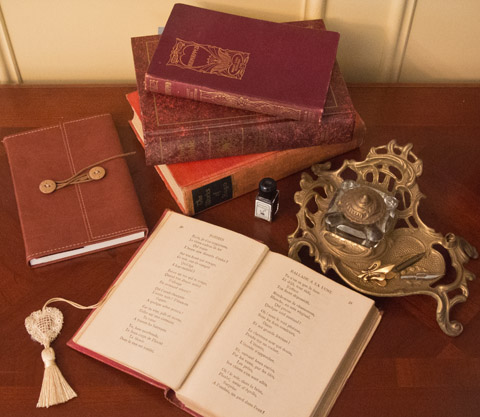My Top Six Tips
for Aspiring Writers of Historical Fiction

Image: DOB
I’ve written all my life but it wasn’t until 2009 that I made a serious attempt at a full-length work of historical fiction, and even then the story alternated between the past and the present – 1975 and 2009/10. I just didn’t have the courage or the skills to set it entirely in the past. For more than a year the manuscript went back and forth between my desk and various assessors. In the process, I learnt to embrace revisions rather than fear them and eventually it became a different (and better) novel than the one I’d started.
Just when I’d completed a polished first draft, incorporating all the feedback the experts had given me, real events overtook my story. In the winter of 2010, Kevin Rudd was deposed, Julia Gillard became PM, and my novel about Australia’s first female Prime Minister was kaput. There were many sleepless nights as I experimented with other political and ambassadorial roles for my female protagonist (first President of a hypothetical Australian republic, Foreign Minister, High Commissioner to the UK) but it just wasn’t the same.
So, I consigned that unfortunate manuscript to a digital drawer (where it remains to this day) and started another book, which went on to become 'Mr Chen’s Emporium'. I was still uncomfortable about setting an entire novel in the past so I shifted back and forth between the 1870s and the modern day. When the book came out, I was nervous about what people would think of my foray into historical fiction. But, much to my surprise, the critics and the readers liked the 1870s storyline (some weren’t so happy with the contemporary thread) and the book became a bestseller.
After 'Mr Chen’s Emporium', I began to feel more comfortable about writing historical fiction. What I liked best about it - and still do - is the element of time travel, the sense of escapism, the notion of journeying into the past and becoming immersed in another world. The novelist L.P. Hartley, author of 'The Go-Between', famously said:
‘The past is a foreign country. They do things differently there.’
I enjoy exploring those ‘foreign countries’, whether it’s the 1870s in 'Mr Chen’s Emporium', the 1880s in 'The Jade Widow', 1966 in 'The Rarest Thing', or the 1930s and 40s, which is the backdrop for my next novel, 'Camille Dupré'. This will be my first historical story set outside of Australia. After four historical manuscripts, I feel ready to make the trip. France was the obvious choice because I know it well and speak the language. Could I have set a novel in Russia or China, for example? I don’t think so. Not without living there and knowing the language.
So, what are my top six tips for writing historical fiction?
1. Do your research. Familiarise yourself with the period. Live there in your imagination until you know it intimately, and then just start writing. You can fact-check the tiny details as you go along – that’s the advantage of having the internet.
2. If there are films and musical recordings from the period you have chosen, immerse yourself in them. Listen to the way people spoke and the words and phrases they used.
3. Search the National Library of Australia’s amazing resource, Trove, for digitised newspaper and magazine articles. There’s nothing better than reading the news as it happened. And if your story is set in Australia between 1933 and 1982, may I suggest Trove’s digitised copies of the 'Australian Women’s Weekly' (trove.nla.gov.au/aww) which will give you a window into the morés and preoccupations of ordinary Australians over the decades.
4. After you’ve done all the research, digest it thoroughly but resist the temptation to dump chunks of historical information into the story, no matter how fascinating you might find them. Too much historical detail can overwhelm a manuscript and slow down the narrative. It’s a balancing act. The historical infrastructure of a novel should act like the electricals in a house – everything should work properly, but you really don’t need to see the wiring.
5. Don’t try to retrofit modern beliefs and perspectives onto the past. 'Mr Chen’s Emporium', for example, deals with the way white colonial society discriminated openly against Chinese miners.
Racial discrimination is something I deplore but that was the norm in the 19th century and it needed to be depicted accurately. Although several characters in the book speak out against prejudice. I had to make it clear that theirs was not the prevailing view.
6. Make your dialogue sound right for the period. Avoid obvious anachronisms of the kind that will jolt a reader out of the world you’ve created and right back into the 21st century.
And most importantly, enjoy the time travel.
Deborah O’Brien
18 February
